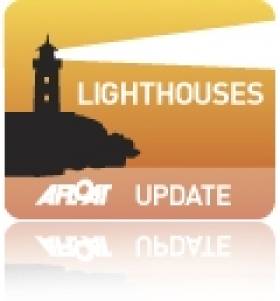Displaying items by tag: Fanad Lighthouse Grant
#LighthouseGrant - A grant of €299,000 was announced by Minister of State for Tourism, Michael Ring TD last week via the Fáilte Ireland Capital Programme, to the Commissioners of Irish Lights.
The grant is to develop a new visitor facility building on a site adjacent to Fanad Head Lighthouse. The project will incorporate a new car park as well as facilities for visitors, a ticket desk and an interpretation area.
Fanad Head Lighthouse is located in Co. Donegal on the eastern shores of the Fanad peninsula in an area recognised for its scenery and has been designated a Signature Discovery Point within Fáilte Ireland's Wild Atlantic Way initiative.
The Minister Ring commented: 'While recent technology advances mean that much of the old physical infrastructure at lighthouse stations is no longer required for core operations, the Commissioners of Irish Lights is to be commended for recognising that these properties are of important heritage value and preserving them as a tourism asset. Today's grant will allow Fanad Lighthouse to fully play its natural part as a truly spectacular stop along the Wild Atlantic Way'.
"The lighthouse itself is due to open to visitors this summer and will offer a unique visitor experience as well as provide an insight into the role of lighthouses in Ireland's past, as well as the lighthouse keeper's way of life. Visitors will have access to the top of the lighthouse with unsurpassed views of the Atlantic and the surrounding coastline. It will be a great asset to the region."
Fáilte Ireland CEO Shaun Quinn emphasised: 'We are more than happy to invest in this project and we believe that it will significantly build on the experience for visitors to this part of Donegal. The project is a perfect fit for the Wild Atlantic Way, which continues to develop and evolve, and an attraction such as Fanad resonates very much with both the 'culturally curious' and 'great escapers' – those overseas market segments to which the Wild Atlantic Way particularly appeals'
The nvestment follows a recent €500,000 refurbishment of Fanad Lighthouse by the Commissioners of Irish Lights, who have also redeveloped the former lighthouse keepers' houses into three self-catering units.
In addition, the Commissioners recently launched a new initiative entitled the Great Lighthouses of Ireland partnership. This initiative will bring together 12 lighthouses in Ireland and Northern Ireland and includes the marketing, preservation and conservation of our important maritime and lighthouse heritage.
The partnership was created to deliver an experience that is motivating and inspiring and fully leverages the Wild Atlantic Way's potential.























